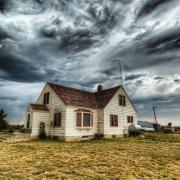The Building Envelope: Your best defence against the elements

The greater Seattle and Portland areas get their fair share of adverse weather. For a comfortable and livable interior, the exterior shell must be able to resist the elements. In construction speak, this outer shell is known as the building envelope, or building enclosure. It’s the physical separator of the interior and the exterior environments of a building, the outer shell that (together with mechanical conditioning systems) makes the indoor environment a place you’d want to spend time in.
The envelope is basically made up of everything that comes into contact with the outer environment, components like the foundation, roof, walls, doors, and windows.
So, what do you want from your building envelope? Here are the big four common measures of effectiveness:
- Physical protection from weather
- Indoor air quality
- Durability
- Energy efficiency
- A solid structure to keep everything in place.
- A drainage plane to move water out of the wall system quickly thus avoiding absorbtion and it's nasty, rotten, moldy consequences.
- An air barrier to control air leakage.
- A thermal barrier to keep heat from escaping.
- And maybe a vapor barrier, as well, for good measure. WARNING: Extreme care is needed when constructing these. For more information on the role of vapor barriers in preventing the pernicious effects of vapor drive, see this blog post.
- Dimensions: you need to get these right so that the right space is covered and you have enough of a buffer between the interior and exterior walls, etc.
- Performance and compatibility of materials: some materials work better together than others and, of course, a broad spectrum of quality exists on the market.
- Fabrication process and details: For an exterior to be durable, it must have been made well, of course.
- The connections and interactions of materials: if windows and walls don’t meet at an airtight connection, for example, you are going to have problems.
Some materials require more maintenance than others, too. A good rule of thumb is “The less you spend on quality materials, the more you will have to spend on maintenance”.
So, if the components of your building envelope are not manufactured and/or put together properly, you'll need good repairs quickly. But not all repairs are alike. For more on choosing between fixing isolated areas or replacing the whole building envelope, take a look at my blog on Targeted and Global Repairs.
Photo credit: Stuck in Customs / Foter / CC BY-NC-SA
 Welcome to the Stewart Consulting Blog
Welcome to the Stewart Consulting Blog
Here you’ll find expert information on all things construction. If you have a specific issue you would like David to address in a blog, ask a question.

